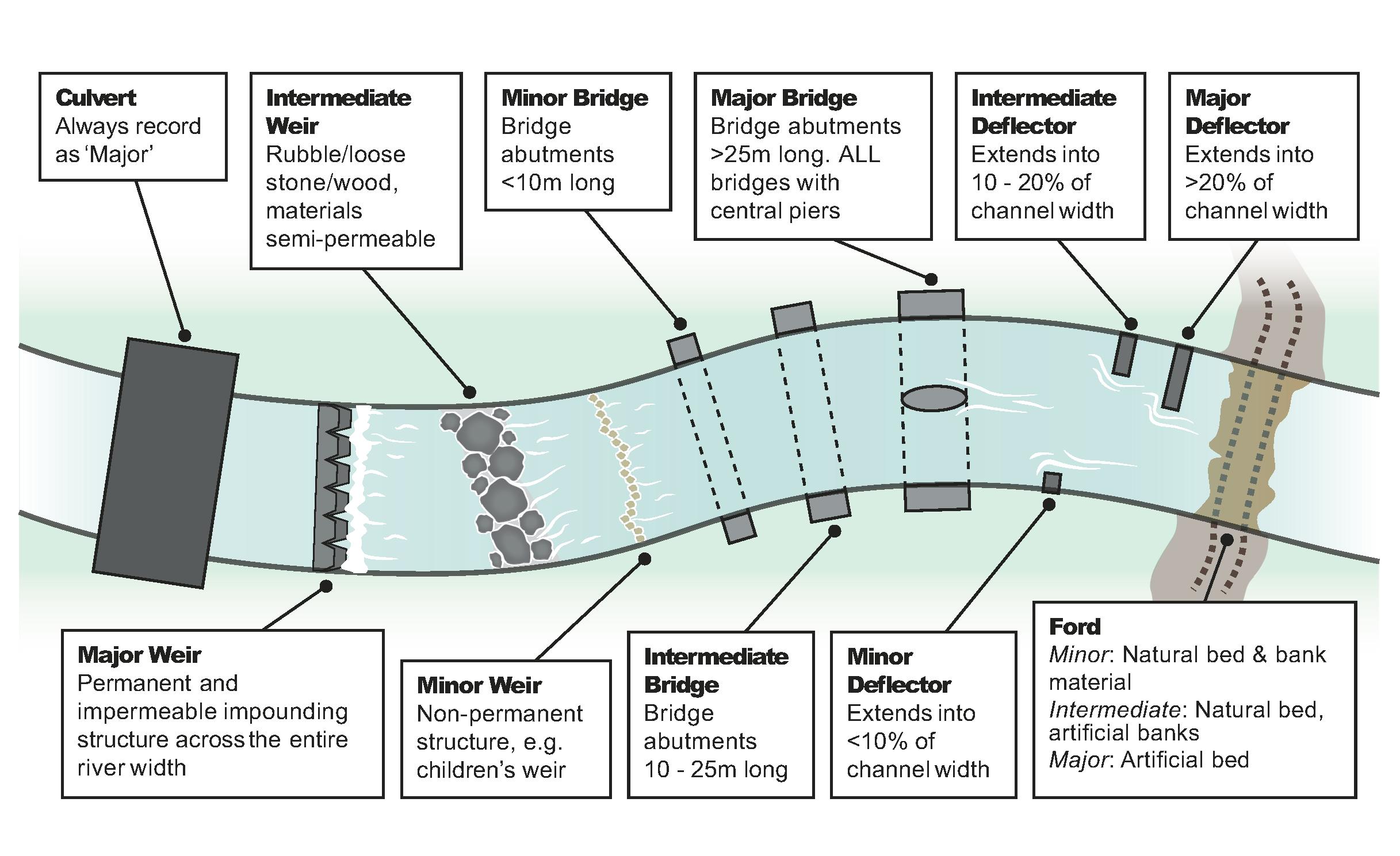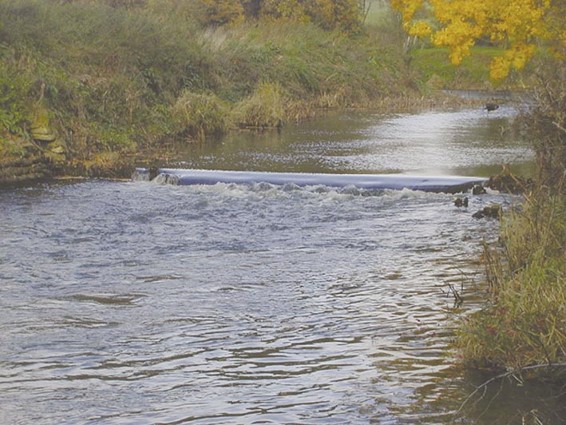Section D: Artificial Features
SECTION D: ARTIFICIAL FEATURES

Indicate the number of artificial features in each category (major, intermediate or minor) occurring within the site. Tally the features as you walk along, add up the total at the end of your survey, and enter the number in the appropriate box using Arabic numbers. Insert ✓ in the box to indicate ‘none’ if no artificial features are present.
You should take a photograph of any major or intermediate structure across the channel, with, if possible, a ranging pole alongside. Take pictures upstream and downstream of the structure if it appears to be causing a significant change in river character (e.g. a dam). If a structure contains features of interest (e.g. fish ladder in major weir), make a note in Section P, as well as taking a photograph. Photographs of weirs should be taken since the height, design and construction material will determine the impact on the river.
If you are unsure about the nature of a structure, make a note on the form and picture and ask for advice.

Illustration of Artificial Features
Is channel obviously realigned?
Only record ‘yes’ if you are sure. Common sense is required, but re-aligned channels are typically straight, and exhibit the same characteristics of resectioned (and often over-deepened) channels (see below). Tick one box only.
Is channel obviously over-deepened?
Only record ‘yes’ if you are sure. Channel-deepening is frequently undertaken in tandem with bank resectioning. Diagnostic signs of over-deepened channels include:
- uniform (and sometimes evenly stepped) bank profile.
- no trees/uniformly-aged trees or saplings along banktop.
- bankfull height often atypically high compared with bankfull width: ratio of width to depth commonly <4:1.
Tick one box only.
Is water impounded by weir/dam?
If a weir or dam is present, indicate if water in the site is affected partly (<33% of its length) or predominantly (>33% of its length) by artificial channel impoundment. You will need to include the effects of weirs or dams located downstream from the site if appropriate. Effects of impoundment include water velocity reductions (creating ponded water) and increased water depth. Tick one box only.

Photo shows water artificially impounded behind a shallow weir structure